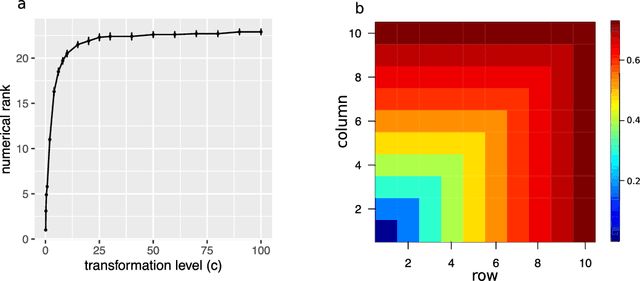Nonparametric Trace Regression in High Dimensions via Sign Series Representation
Paper and Code
May 04, 2021



Learning of matrix-valued data has recently surged in a range of scientific and business applications. Trace regression is a widely used method to model effects of matrix predictors and has shown great success in matrix learning. However, nearly all existing trace regression solutions rely on two assumptions: (i) a known functional form of the conditional mean, and (ii) a global low-rank structure in the entire range of the regression function, both of which may be violated in practice. In this article, we relax these assumptions by developing a general framework for nonparametric trace regression models via structured sign series representations of high dimensional functions. The new model embraces both linear and nonlinear trace effects, and enjoys rank invariance to order-preserving transformations of the response. In the context of matrix completion, our framework leads to a substantially richer model based on what we coin as the "sign rank" of a matrix. We show that the sign series can be statistically characterized by weighted classification tasks. Based on this connection, we propose a learning reduction approach to learn the regression model via a series of classifiers, and develop a parallelable computation algorithm to implement sign series aggregations. We establish the excess risk bounds, estimation error rates, and sample complexities. Our proposal provides a broad nonparametric paradigm to many important matrix learning problems, including matrix regression, matrix completion, multi-task learning, and compressed sensing. We demonstrate the advantages of our method through simulations and two applications, one on brain connectivity study and the other on high-rank image completion.
 Add to Chrome
Add to Chrome Add to Firefox
Add to Firefox Add to Edge
Add to Edge